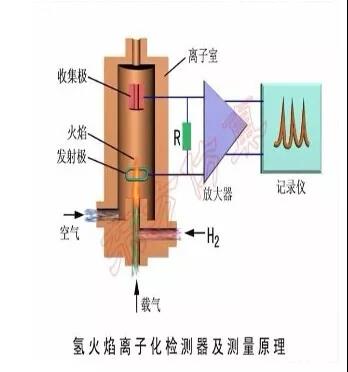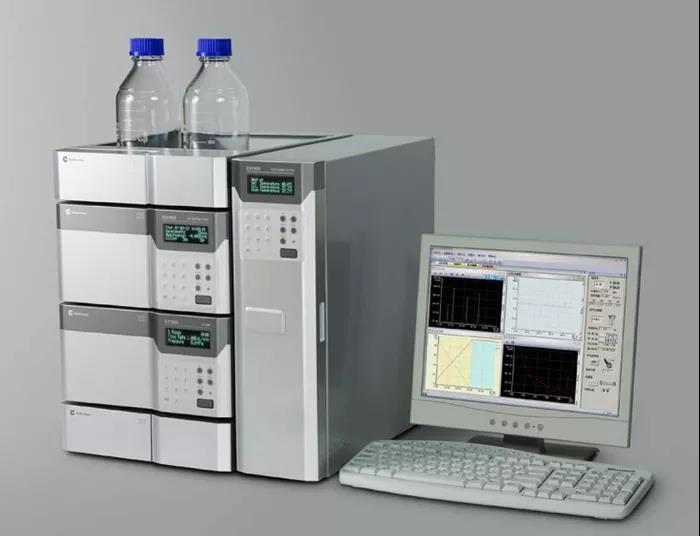The monitoring process of atmospheric VOCs can be divided into sample collection, sample enrichment and sample analysis. Sample collection includes methods such as direct sampling and derivatization sampling. The collection and enrichment of samples can also be completed simultaneously during the sampling process by means of adsorption. After sample collection, it can be enriched and analyzed by techniques such as cloud preconcentration.

The commonly used analytical techniques are gas chromatography, gas chromatography-mass spectrometry, gas chromatography hydrogen flame ionization detection, high performance liquid chromatography, Fourier transform infrared spectroscopy and other methods. Atmospheric VOCs monitoring can be divided into two modes: manual monitoring and automatic monitoring. Manual monitoring can sample multiple points at the same time, but the time resolution is low. Automatic monitoring can obtain high-resolution observation data, which is more conducive to in-depth development of VOCs. Research on time variation and photochemical reaction mechanism.

1. Manual monitoring method
Manual monitoring methods In different manual monitoring methods of VOCs such as gas chromatography-mass spectrometry, gas chromatography hydrogen flame ionization detection method, high performance liquid chromatography, Fourier transform infrared spectroscopy, etc., gas chromatography-mass spectrometry is characterized by its selectivity and sensitivity. It has high performance and is suitable for the identification of most VOCs components. It has gradually been widely used, and has been continuously optimized and updated to form the current mainstream preconcentration-thermal desorption-gas chromatography-mass spectrometry/hydrogen flame ionization detector. Monitoring method, in which pre-concentration is the key link of this method. The pre-concentration system can enrich the VOCs components, and at the same time remove the water and carbon dioxide in the sample that will interfere with the analysis, improve the sensitivity of the instrument, and improve the components to be measured. seperate effect. At present, the commonly used preconcentration systems can be mainly divided into liquid nitrogen cold trap preconcentration systems and adsorbent-assisted electronic refrigeration preconcentration systems. Among them, the liquid nitrogen cold trap pre-concentration system is a more traditional pre-concentration method, and its refrigeration temperature can reach -180 °C. The sensitivity is high, and it will not bring about the phenomenon of "discrimination" of the target compound. The disadvantages are that the equipment is large, the liquid nitrogen needs to be replaced frequently, and the operating cost is high. The refrigeration temperature of the adsorbent-assisted electronic refrigeration preconcentration system can reach as low as -50 °C. The cold trap temperature was -30°C. This method has the advantages of small equipment volume and suitable for online monitoring, but it should be noted that the performance of the adsorbent has a great influence on the analysis results, and the optimal adsorbent or adsorbent combination should be selected through systematic experimental verification. In addition to the above two pre-concentration systems, Peking University and Wuhan Tianhong Company have jointly developed a pre-concentration system based on a cascade compressor refrigeration cycle. The enrichment temperature can reach -150°C without using liquid nitrogen. American Entech company has developed multiple capillary column trap technology, which does not require liquid nitrogen and other refrigerants and adsorbents, can enrich TO-15 components at 35 ° C, and has a good water removal effect, but this equipment There are relatively few applications at present, and its performance has yet to be evaluated. C2-C3 components such as ethane, ethylene, propane, and acetylene have poor response in conventional capillary columns and early peaks, which are easily affected by components such as nitrogen, oxygen, carbon dioxide, and water that have not been removed. When analyzing C2-C3 components, methods need to be improved and optimized.

One of the methods is to use a multi-dimensional cutting unit (or heart cutting unit, microfluidic plate, etc.) in gas chromatography to perform dual-column switching. C3 component, and DB-624 column or similar type of chromatographic column are used to analyze C4-C12 components, and the double columns are respectively connected with hydrogen flame ionization detector and mass spectrometer. In addition, the cold column oven injection method can realize the analysis and detection of C2 to C12 components based on a single chromatographic column (DB-1 or DB-624 and other similar columns). Formaldehyde and other aldehydes and ketones have strong polarity and are easily adsorbed on the inner wall of the sampling tank. At present, the standard manual monitoring method in China is to use a sampling tube filled with 2,4-dinitrobenzene trap (DNPH) for derivatization sampling. , analyzed using high performance liquid chromatography. Studies have shown that aldehydes can also be analyzed by preconcentration-thermal desorption-gas chromatography-mass spectrometry system by sampling with inertized Summa tank, optimizing cold trap procedures or packing, and using selected ion detection (SIM) mode for mass spectrometry. 、The analysis of ketone components, combined with the heart cutting technology, can analyze all 117 kinds of volatile organic compounds required to be monitored in the "2018 Monitoring Plan" with only one injection.

2, the method of automatic monitoring:
Automatic monitoring methods VOCs automatic monitoring methods include proton transfer mass spectrometry (PTRMS), time-of-flight mass spectrometry (TOF-MS), laser spectroscopy (TDLAS), Fourier transform infrared spectroscopy (FTIR), online gas chromatography-mass spectrometry/hydrogen flame ionization Detector (GC-MS/FID), Gas Chromatography/Photoionization Gas Detector (GC-PID), Gas Chromatography-Reducing Gas Detector (GC-RGD), etc. Among them, the online gas chromatography-mass spectrometry/hydrogen flame ionization detector method has the advantages of high sensitivity and time resolution, and comprehensive detection of species, and is currently the main automatic monitoring method used at home and abroad.





